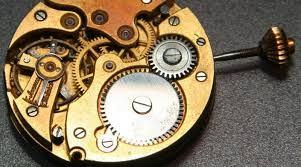 My recent “free will” essay prompted some comments about evolution (on the Times-Union blog site.) One invoked (at verbose length) the old “watchmaker” argument. Nature’s elegant complexity is analogized to finding a watch in the sand; surely it couldn’t have assembled itself by random natural processes. There had to be a watchmaker.
My recent “free will” essay prompted some comments about evolution (on the Times-Union blog site.) One invoked (at verbose length) the old “watchmaker” argument. Nature’s elegant complexity is analogized to finding a watch in the sand; surely it couldn’t have assembled itself by random natural processes. There had to be a watchmaker.
This argument is fallacious because a watch is purpose-built and nature is not. Not the result of a process aimed at producing what we see today; instead one that could just as well have produced an infinity of alternative possibilities.
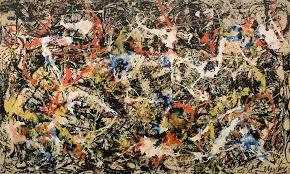
Some see God in a similar role, not evolution’s designer but, rather, just setting it in motion. Could life have arisen out of nowhere, from nothing? Or could the Universe itself? Actually science has some useful things to say about that — better than positing a God who always existed or “stands outside time and space,” or some such woo-woo nonsense. And for life’s beginnings, while we don’t have every “i” dotted and “t” crossed (the earliest life could not have left fossils), we do know the basic story:

Eventually one of those had the property of duplicating itself, by glomming other chemical bits floating by, or by splitting. Maybe that was an extremely improbable fluke. But realize it need only have happened once. Because each copy would go on to make more, and soon they’d be all over the place.
However, the copying would not have been perfect; there’d be occasional slight variations; with some faulty but also some better at staying intact and replicating. Those would spread more widely, with yet more variations, some yet more successful. Developing what biologist Richard Dawkins, in The Selfish Gene, called “survival machines.” Such as a protective coating or membrane. We’ve discovered a type of clay that spontaneously forms such membranes, which moreover divide upon reaching a certain size. So now you’ve got the makings of a primitive cell.
Is this a far-fetched story? To the contrary, given early Earth’s conditions, it actually seems inevitable. It’s hard to imagine it not happening. The 1952 Miller-Urey experiment reproduced those conditions in a test tube and the result was the creation of organic compounds, the “building blocks of life.”

Of course DNA and genes, and Nature itself, do nothing with conscious purpose. Replicators competing with each other is simply math. Imagine your computer screen with one blue and one red dot.

A parable: A king wishes to bestow a reward, and invites the recipient to suggest one. He asks for a single rice grain — on a chessboard’s first square — then two on the second — and so on. The king, thinking he’s getting away cheaply, readily agrees.
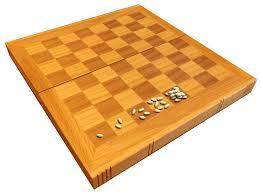
This is the power of geometric multiplication. The power of genes replicating, in vast numbers, over vast time scales. (A billion years is longer than we can grasp.) And recall how genes are effectively in competition because occasionally their copies are imperfect (“mutations”), so no two organisms are exactly identical, and some are better at surviving and reproducing. Those supplant the others, just like red supplanted blue on your computer screen. But the process never stops, and in the fulness of time, new varieties evolve into new species. It’s propelled by ever-changing environments, requiring that organisms adapt by changing, or perish. This is evolution by natural selection.
Fossils provide indisputable proof. It’s untrue that there are “missing links.” In case after case, fossils show how species (including humans) have changed and evolved over time.
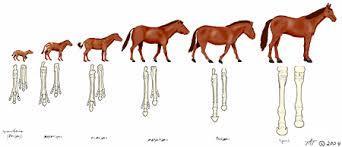
We even see evolution happening live. Antibiotics changed the environment for bacteria. So drug-resistant bacteria rapidly evolved. Once-rare mutations enabling them to survive antibiotics have proliferated while the non-resistant are killed off.
Note that evolution doesn’t mean inexorable progression toward ever more complex or “higher” life forms. Again, the only thing that matters is gene replication (remember that red computer screen). Whatever works at causing more copies to be made is what will evolve. Humans evolved big brains because that happened to be a very successful adaptation. If greater simplicity works better, then an animal will evolve in that direction. There are in fact examples of this.
Another false argument against evolution is so-called “irreducible complexity.” Author Michael Behe claimed something like an eye could never have evolved without a designer because an incomplete, half-formed eye would be useless, conferring no advantage on an organism. In fact eyes did evolve through a long process beginning with light-sensitive cells that were primitive motion detectors, not at all useless. They did entail a survival advantage, albeit small, but it multiplied over eons, and improved by gradual incremental tweaks. So the eye, far from rebutting evolution, thus beautifully illustrates how evolution actually proceeds, and refutes any idea of intelligent design.
In fact, because our eyes did evolve in the undirected the way they did, they’re very sub-optimal. A competent designer would have done far better. He would not have put the wiring in front of the light-sensitive parts, blocking some light, nor bunched the optic nerve fibers to cause a blind spot.
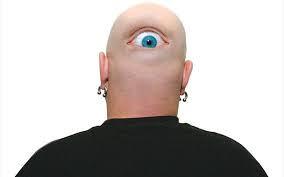
Evolution by natural selection is the one great fact of biology. Not merely the best explanation for what we see in Nature, but the only possible rational explanation, and one that explains everything. As the geneticist Theodosius Dobzhansky said, “Nothing in biology makes sense except in the light of evolution.”
Advertisements